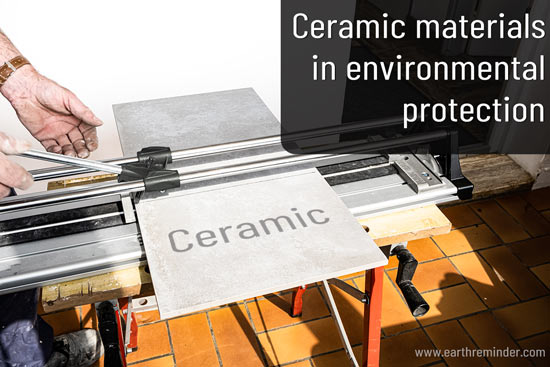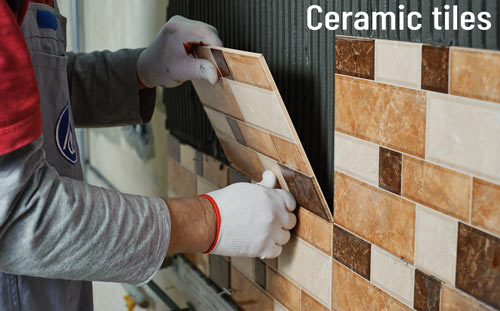Application of Ceramic Materials in Environmental Protection
Ceramic Materials in Environmental Protection
Environmental sustainability is one of the prime issues that humans are suffering now a day. Everyone is trying to neutralize their role in environmental protection, whether it comes to home gardening or high-end chemical industries.
Chemical industries greatly influence environmental protection as they are working and producing chemicals that are directly or indirectly used in daily life and somehow greatly influence the environment. The ceramic materials are now used vastly for the prevention of the environment and its sustainability.
The ceramics industry has conventional products used in culinary designs, buildings, and ornaments. However, advanced ceramics are being oppressed to create new components designed to manage energy production, air pollution, improved energy storage, green buildings, and environmental engineering.
Table of Contents
Properties of Ceramic that make it suitable for the environment
Ceramics have amazing properties that assist environment-friendly products. Apparatus made of high-grade ceramic materials contribute significantly to the apprehension of environment-friendly technologies.
They comprise a principal requirement with the following properties:
- Ceramic materials have high stability at temperatures above 1000 °C
- It can effectively resist thermal shock, which makes it ideal for thermal plants.
- It can resist corrosive attack solutions, gases, and oxidizing conditions.
- Ceramic products have high wear resistance, which makes them ideal for long life.
- The amazing thermal and electrical insulating capacity makes them ideal for the environment.
Their ability to withstand temperatures above 1000 °C means that they are perfect for photovoltaic, solar energy conversion, and other power plant engine systems. Furthermore, ceramic gears have high resistance to thermal shock and corrosive attack that makes them ideal to use in environmental technology in the water processing and treatment industry.
Ceramic Material Classes Along with their Structural Characteristics
According to structure or configuration, ceramic materials can be classified into several types, and some of them are described below:
- Oxides with fluorite structure
In oxides with fluorite structure, strong ionic conductivity due to the low activation energy level available for the movement of oxygen ions is seen. Some examples of well-studied oxides with fluorite structure are ZrO2, CeO2, and δ-Bi2O3.
- Oxides with perovskite structure
Oxides with perovskite structures have great crystallographic flexibility, making us study more about its applications in the energy conversion process, thermoelectrics, electroceramics, superconductors, etc.
- Oxides with lower structural symmetry
Some examples of oxides with lower structural symmetry include LaTaO4, CeTaO4, and PrTaO4, which transfer their structure with the temperature change.
- Oxides with pyrochlore structure
These are the type of ceramic materials; simply, we can call pyrochlores. These oxides with pyrochlore structure show “structural disorders easily by partial reversion of the pyrochlore structure towards the fluorite structure.”
- Microporous network zeolites
Microporous network zeolites are those materials having high stability that some of them can remain in a solid-state even in high temperature as 800-degree Celsius.
Environmental Applications of Ceramics:
Ceramics like several materials, such as glass and metals, that can be used to protect the environment and help regenerate damaged ecosystems. The use of technology created from these elements or materials for this purpose is recognized as environmental engineering.
Ceramic rubble for Eco-friendly Building Technology
Dumping waste and inefficient waste management have led to high noise and water, air, and soil pollution. These pollutions are not only environmentally hazardous but produce a significant economic burden. Appropriate recycling of rubble can convert to a usable and useful resource that saves materials and prevents climate degradation from promoting sustainable change.
Ceramic roofing rubble has been reused as a substitute in structural concrete production. Up to 30% of ceramic rubble can be added without any negative impact on cement’s mechanical strength. Ceramic tile also is a popular building material. Ceramic tiles are now produced with recycled old ceramic to a safe environment and less dumping. Ceramic products include floor and wall coverings, roofing materials, sanitary ware, ornamental household products.
Ceramics Used in Environmental Engineering
Technical ceramics are very useful in environmental engineering because of their magnificent mechanical properties, high surface area, stress resistance, and stability at high temperatures. They are used to produce filters for hot gas processing. It can resist heat at up to 1500 oC and are suitable for heat shock and corrosion-resistant. Ceramics can save up to 50% of fuel requirements in heat exchangers, which makes them ideal for water purifiers or waste treatment plants.
Ceramics in Clean Energy Production
Ceramics play a unique part in energy production technologies such as chemical and nuclear energy and light-harvesting. Ceramic insulators and electrolytes are widely used in nuclear plants. Ceramic thermal coatings in diesel engines or gas turbines improve operational efficiency very much; they increase the operating lifetime and improve fuel efficiency.
Can be used in the H2 Separation Technology
We can utilize high-temperature proton conductors in sensing devices for quantitative analysis of hydrogen molecules and humidity. Besides, these materials can be implemented through several other types of sensors, such as gas sensors and sensors for analyzing water, CO, and H2.
Conclusion
With the diversity of ceramic uses in producing environmentally clean devices and their capability of being recycled into useful in-demand products, ceramics play an important role in clean technology.
Moreover, ceramic industries help build a circular economy by reusing and recycling the waste products they produce for ecological, economic, and social sustainability.
References:
-
- www.azocleantech.com – Using Ceramic Materials For Clean Technology Alternatives.
- www.azom.com – The Environmental Applications of Technical Ceramics.
- www.researchgate.net – Publication Ceramic Materials For Energy and Environmental Applications.

